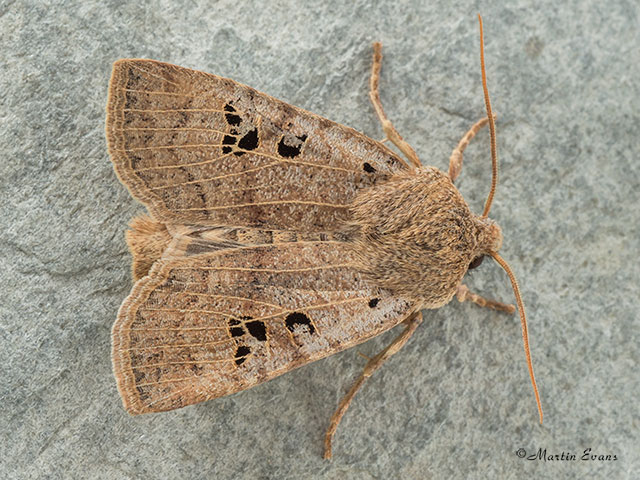Noctuidae
73.196 Black-spotted Chestnut Conistra rubiginosa (Scopoli, 1763)
Immigrant / Recent Colonist South East England
Similar species: This moth is unlikely to be mistaken for any other British or Irish species.
Forewing: 13 to 15mm
Habitats: In Europe it inhabits deciduous woodland clearings, mixed woodland, hedgerows, green lanes and gardens.
Habits: The moth comes to sap runs, sugar and light. It is active in mild weather throughout the winter.
Foodplant: The early stages have not been recorded in Britain. On the European mainland the polyphagous larva feeds mainly at night on the buds and flowers and then the leaves of oaks, elms, Field Maple, sallows, Blackthorn, cherries, Hawthorn, Lilac, roses, gorse, Heather and other deciduous shrubs and trees and later herbaceous plants such as bedstraws, Yarrow, plantains and Dandelion.


